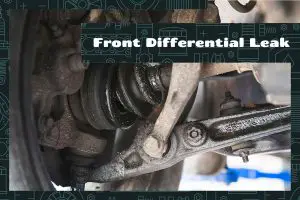Transmission fluid is an essential part of any vehicle, playing a vital role in keeping the engine running smoothly. To ensure your vehicle performs at its best, you should use the right type of transmission fluid and to maintain it properly. But what happens when you mix different types of transmission fluids? Can it cause damage, or is it sometimes okay to do so?
Mixing transmission fluids is generally not recommended, as it can lead to compatibility issues, viscosity variation, and damage to seals and gaskets. However, in emergency situations, mixing fluids within the same category may be acceptable as a temporary measure.
This article will provide a comprehensive guide on the topic of mixing transmission fluids. We will explore the various transmission fluids categories, their specific functions, the risks associated with mixing transmission fluids and the situations in which it might be acceptable.
The Role of Transmission Fluid
Let’s delve into the various functions that transmission fluid serves in your vehicle’s system.
- Lubrication—Transmission fluid minimizes friction between the moving components of the transmission, reducing wear and tear. It ensures that gears, bearings, and other parts operate smoothly and efficiently, preventing premature failure.
- Cooling—The transmission fluid also dissipates heat generated during the operation of your vehicle. It helps to maintain an optimal temperature in the transmission system, avoiding overheating and keeping performance consistent.
- Pressure regulation—In automatic transmissions, the fluid acts as a hydraulic fluid. It enables the transmission to shift gears by transmitting pressure to the appropriate components, like clutch packs and bands. This pressure regulation allows for smooth gear changes and efficient power transfer.
- Corrosion prevention—The additives in transmission fluid protect metal components from rust and corrosion. By creating a protective layer on the surfaces of gears and other parts, the fluid ensures that these critical components remain in good working condition, extending the life of your vehicle’s transmission system.
Transmission Fluid Categories
Transmission fluids are not one-size-fits-all; different types are designed to cater to specific vehicle requirements. Here, we’ll learn about the various categories of transmission fluid and their unique characteristics.
Automatic transmission fluid (ATF)
ATF is specifically designed for use in automatic transmission systems. There are two main types of ATF:
Conventional ATF
Conventional ATF is a mineral-based fluid, formulated to meet the requirements of most automatic transmissions. It contains additives to provide essential properties, such as anti-wear, anti-foaming, and anti-corrosion.
Synthetic ATF
Synthetic ATF is a more advanced option, offering superior performance compared to conventional ATF. Made from synthetic base oils, it provides improved thermal stability, oxidation resistance, and extended service intervals. It’s ideal for vehicles subjected to harsh conditions or heavy loads.
Manual transmission fluid
Manual transmission systems have distinct lubrication requirements compared to automatic transmissions. There are two primary types of manual transmission fluids:
Manual transmission gear oil
This type of fluid is typically thicker and more viscous than ATF. It is designed to withstand the higher pressures and temperatures experienced in manual transmissions. Manual transmission gear oil provides excellent wear protection, corrosion resistance, and temperature stability.
Synchronized manual transmission fluid
Synchronized manual transmissions require a more specialized fluid to ensure smooth gear changes. This type of fluid is formulated to enhance friction characteristics between synchronizers, resulting in smoother shifts and better synchronizer durability.
Continuously variable transmission (CVT) fluid

CVT fluid is engineered specifically for use in continuously variable transmissions. These transmissions utilize a belt or chain-driven system to provide an infinite number of gear ratios. CVT fluid is designed to have excellent frictional properties, allowing the belt or chain to maintain a strong grip on the pulleys. This ensures efficient power transfer and prevents slippage.
Dual clutch transmission (DCT) fluid
DCT fluid is formulated for dual-clutch transmissions, which combine elements of both manual and automatic transmissions. These systems require a fluid with specific frictional characteristics to ensure proper clutch engagement and disengagement.
This type of transmission fluid is designed to provide excellent protection against wear, minimize clutch chatter, and maintain consistent performance over a wide range of temperatures.
The Risks of Mixing Transmission Fluids
While some may assume that mixing transmission fluids is harmless, there are significant risks associated with combining different types of fluids.
1. Compatibility issues
Not all transmission fluids are compatible with one another. Mixing fluids with different chemical compositions can result in the formation of sludge or other harmful deposits. These deposits can clog narrow passages, disrupt the flow of fluid, and ultimately lead to transmission failure.
2. Viscosity variation
Each type of transmission fluid is designed with a specific viscosity to suit the requirements of the corresponding transmission system. Mixing fluids with different viscosities can compromise the fluid’s ability to lubricate and protect components effectively. This can result in increased wear and tear and reduced transmission efficiency.
3. Seal and gasket damage
Different transmission fluids contain various additives and chemical compositions that can affect the materials used in seals and gaskets. Mixing fluids can cause these components to swell or degrade, leading to fluid leaks and potential transmission failure.
4. Deterioration of frictional properties
Transmission fluids are formulated to provide the appropriate frictional characteristics for specific transmission types. Mixing fluids can alter these properties, resulting in poor gear shifts, slipping clutches, and reduced overall performance.
5. Reduced performance and efficiency
Ultimately, the combination of the risks mentioned above can lead to a decline in your vehicle’s performance and efficiency. Transmission issues can result in poor fuel economy, sluggish acceleration, and even complete transmission failure if left unaddressed.
When is it Acceptable to Mix Transmission Fluids?
Mixing transmission fluids is generally discouraged, but there are specific circumstances in which it may be deemed acceptable.
1. Temporary emergency situations
In cases where the correct transmission fluid is unavailable and waiting for a replacement is not an option, you might need to mix fluids as a temporary solution. However, this should only be done in emergencies and should be corrected as soon as possible to avoid long-term damage.
2. Mixing fluids within the same category
If you need to mix fluids, make sure they belong to the same category, such as synthetic ATF with another synthetic ATF, or manual transmission gear oil with another gear oil. Mixing fluids within the same category is less likely to cause compatibility issues or adverse effects on the transmission system.
Precautions and Potential Consequences
When mixing transmission fluids becomes necessary, follow these precautions:
- Limit the amount of mixed fluid—Use the smallest amount of mixed fluid required to address the immediate issue. This will minimize the potential for negative effects on the transmission system.
- Replace or flush the mixed fluid as soon as possible—Once the appropriate fluid becomes available, it replace or flush the mixed fluid promptly. This will help to prevent long-term damage and restore the transmission system to its optimal state.
- Monitor the vehicle’s performance—After mixing fluids, keep a close eye on the vehicle’s performance. Look for signs of transmission issues, such as slipping gears or rough shifts, and address any problems immediately.
How to Choose the Right Transmission Fluid
Following these recommendations will ensure your transmission system remains in top condition and continues to function efficiently:
- Consult your owner’s manual—The first step in choosing the right transmission fluid is to refer to your vehicle’s owner’s manual. The manual will specify the type of fluid recommended by the manufacturer for your specific make and model.
- Consider driving conditions and climate—Your driving conditions and the climate you live in can also play a role in determining the most suitable transmission fluid.
- Check for manufacturer endorsements—When selecting a transmission fluid, look for products that carry endorsements or certifications from vehicle manufacturers. These endorsements indicate that the fluid has been tested and meets specific performance criteria set forth by the manufacturer.






